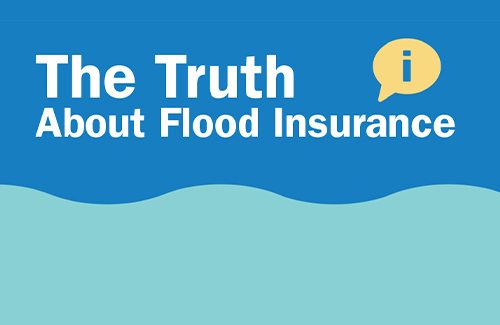Although flooding is America’s number one natural disaster, many Americans don’t have or even know about flood insurance.
Some myths and misinformation surrounding the National Flood Insurance Program (NFIP) prevent residents and business owners from seeking insurance protection. Below are some top myths about flood insurance to share with your community to set the record straight and help them be better informed:
- You can’t buy flood insurance if you don’t live in a mapped floodplain. Flooding can occur anywhere, not just designated high-risk areas. Regardless of individual risk, anyone living in a NFIP participating community can purchase flood insurance. You can help potential clients better understand their flood risk by showing them their community flood map on FEMA’s Map Service Center.
- You can’t buy flood insurance if you live in a high-risk flood area. Anyone living in a participating NFIP community can buy flood insurance. Encourage potential clients to purchase a policy as soon as possible, because flood insurance policies typically take 30 days to go into effect.
- Homeowners and renters’ insurance includes flood insurance. Most homeowners and renters’ insurance policies don’t protect one’s home from flood damage. Typically, a separate flood insurance policy is required for flood damage costs to be covered in the event of a hurricane or other flood event. Speak with your client to determine the right property or contents coverage as it’s slightly different if they’re a business owner, renter, or homeowner.
- You can’t purchase flood insurance if your property has flooded before. Community members are still eligible to purchase flood insurance even if their home, apartment, or business has flooded in the past. If their community participates with the NFIP, they can almost always purchase flood insurance.
- Federal disaster assistance will always pay for flood damage. Disaster assistance is not always available for flood damage. When it is, it requires a presential disaster declaration. Usually, the assistance comes in the form of a Small Business Administration disaster loan. Remind potential clients that a disaster loan may not cover all flood damage costs and that flood insurance is the best way to ensure coverage following a flood disaster.
Encourage your clients and potential clients to visit floodsmart.gov to learn more about their flood risk and about how a flood could cost them without the protection of flood insurance.

